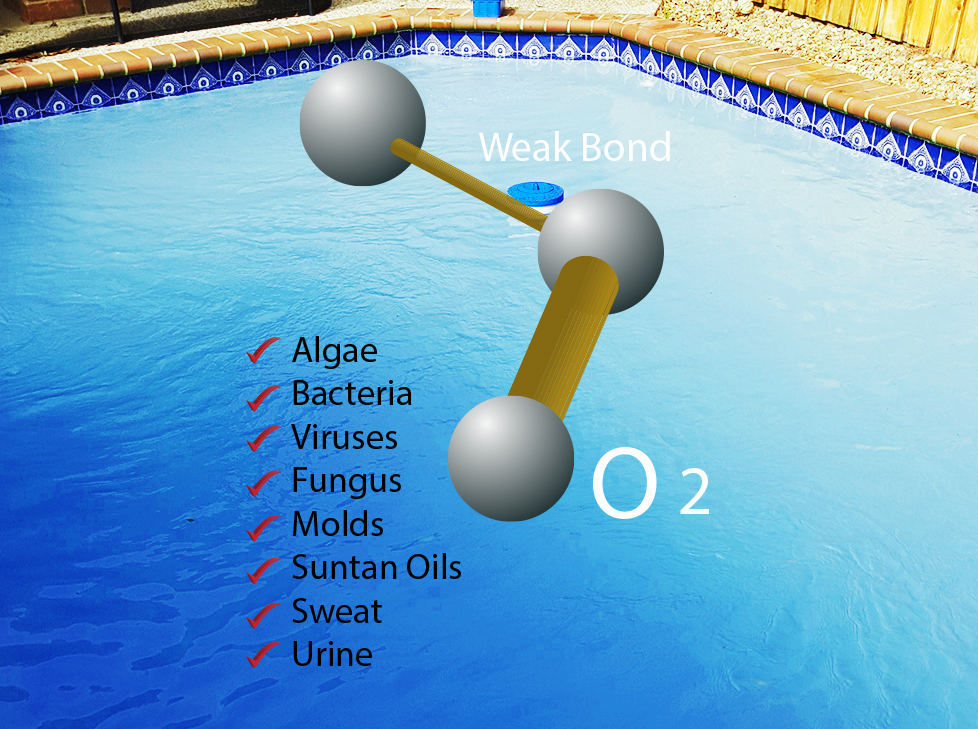Most Pool Service Starting At
$185.00 + tax
How Oxidation Helps Your Pool
If you own a swimming pool, then you know the importance of adding chlorine in the water. You use it to kill bacteria and unwanted algae, but do you know how the chemical successfully keeps the water safe and clean? The cleaning process doesn’t end once the chlorine has made contact with water. It starts, instead, through a chemical reaction called oxidation.
How Oxidation Works

When you see a rusty iron bar or a bitten apple turn brown, that’s oxidation. This process occurs when oxygen interacts with another substance and strips its electrons, causing the item to dissolve or break down. During this reaction, a new compound is formed. For example, when oxygen combines with iron at an atomic level, they create iron oxide (rust). In the case of chlorine, hypochlorous acid – the one responsible for killing algae and bacteria – is formed.
The Proper Chlorine Level
You need to remember that hypochlorous acid is an interaction between oxygen and chlorine. If there’s anything inside your swimming pool (e.g. leaves, suntan lotion residue, or sweat) chlorine will combine with these substances and form chlorinates instead. Too much chlorinates encourages algae and bacterial growth, so make it a habit to clean your pool regularly before the water is riddled with organic matter.
If you’ve chlorinated your pool several times and the water still looks green or murky, it’s a sign that you should use an oxidizing shock product. Shocking your pool helps “free chlorine” to reach its “breakpoint chlorination” or the point where chlorine is able to destroy water contaminants.
You can determine whether your pool needs shocking by measuring your pool’s water chemistry. If “free chlorine” is higher than the “total chlorine” in the water, then you have to shock your pool. Higher amounts of “free chlorine” usually mean that the chemicals can’t keep up with the organic materials and pathogens in the pool.
What’s Oxidation Reduction Potential?
Another term you need to understand is oxidation-reduction potential (ORP). ORP is the measurement of chlorine’s ability to oxidize contaminants in the water. It’s a standard test for drinking water treatment and, for over 40 years, used to improve the sanitation of swimming pools. It’s recommended by the Association of Pool & Spa Professionals (APSP) that the ORP levels of pools should at least be 650mv.
After reading some facts about oxidation, you can fully appreciate the act of adding chlorine to the pool. Just remember to make sure that the pool’s water chemistry and ORP are sound, so the chemical is able to oxidize properly.
Having trouble keeping your pool clean? Contact Sterling Pool Service today. We provide an array of top-notch swimming pool services, from pool service and cleaning to leak detection and repair. Just give us a call at 888-973-0274 so we can schedule a pool diagnosis or pool cleaning service. We help residential properties in Sachse, Wylie, Murphy, Plano, Allen, Richardson, Garland and Dallas, Texas.
 A Native Pool Service Company
A Native Pool Service Company






